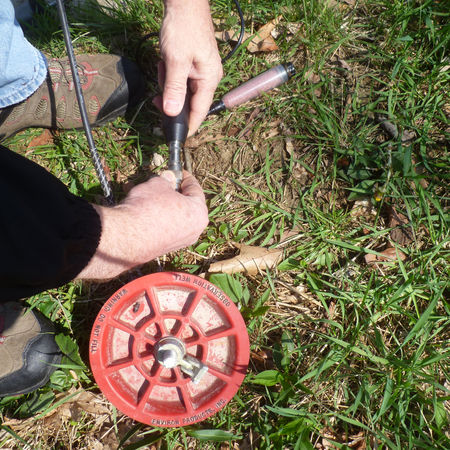
Water Level Monitoring
Water level monitoring in wells
Groundwater is measured by measugin the static water level in the well. By measuring the depth from the top of the well (Top of Casing) to the standing water level, we know the elevation, or conversely, the depth to water.
The key to underastandsing groundwater fklow is to know the changes within the well over time and the relative water level in nearby wells. As water flows from high to low elevation, we can measure the relative difference in a sreies of wells and infer the direction of groundwater flow.
While groundwater flow is generally horizontal, there are smaller components of vertical flow. When pairs of nearby wells are monitorined for water level, we can use the difference in water level of the two wells and calculate the potential for vertical flow, upward or downward.
Water Level Groundwater Monitoring Well (arcgis.com)
The USGS monitors 4 wells in or nearby Loudoun County
49Y 1 SOW 022 - U.S. Geological Survey - National Ground Water Monitoring Network (usgs.gov)
49Y 1 Sow 022 - USGS Water Data for the Nation
50W 4C - U.S. Geological Survey - National Ground Water Monitoring Network (usgs.gov)
50W 4C - USGS Water Data for the Nation
49V 1 - U.S. Geological Survey - National Ground Water Monitoring Network (usgs.gov)
49V 1 - USGS Water Data for the Nation
48X 20 - U.S. Geological Survey - National Ground Water Monitoring Network (usgs.gov)
48X 20 - USGS Water Data for the Nation
Note the 5 ft upward shift in the Leesburg well was caused by nearby development resultinghg in changes to groundwater recharge
All USGS data are available from the USGS Dashboard.
Power in Numbers
30
Number of monitoring wells
50
Locations
200
Year of data
Project Gallery








